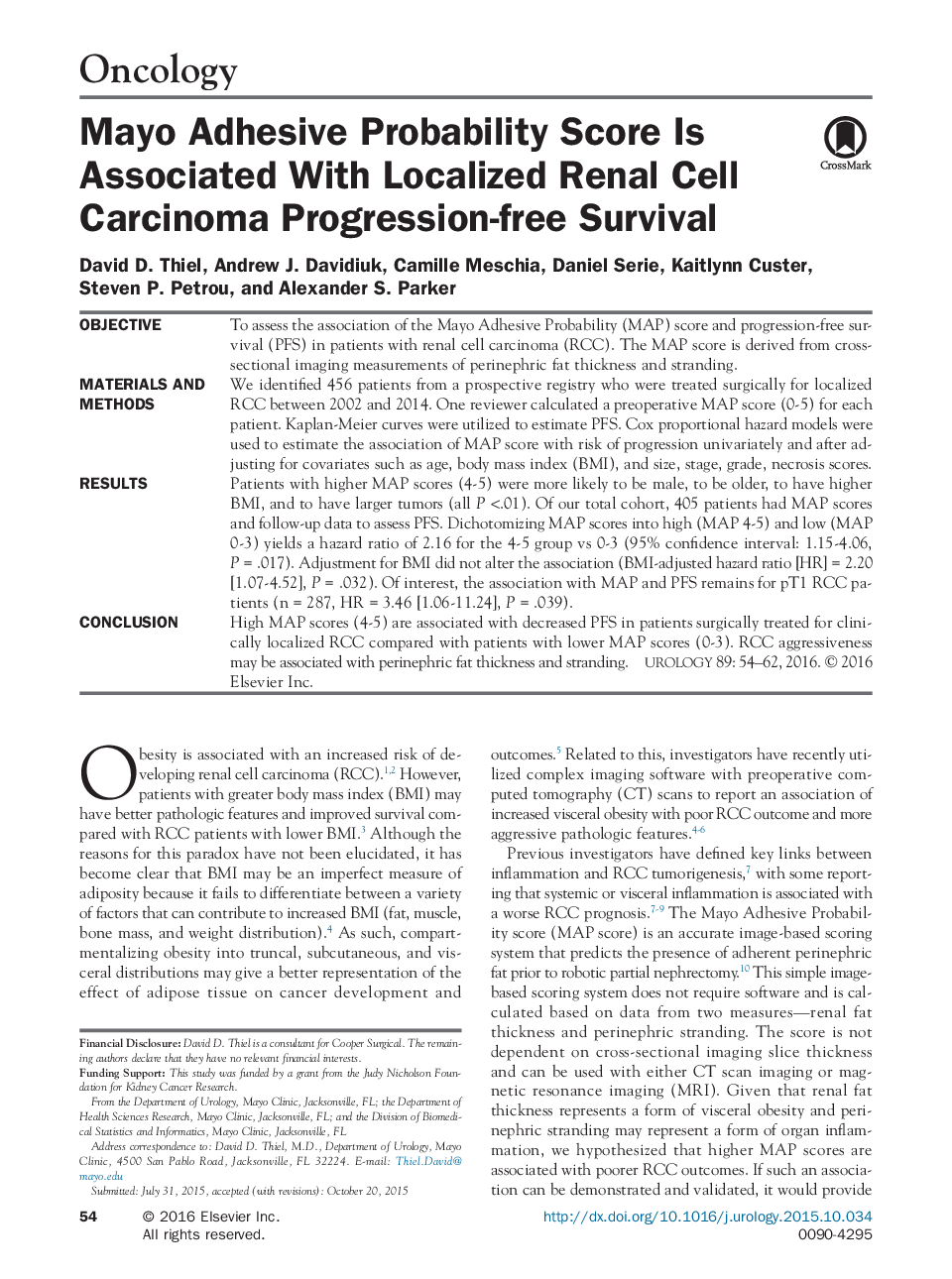| Article ID | Journal | Published Year | Pages | File Type |
|---|---|---|---|---|
| 6166012 | Urology | 2016 | 9 Pages |
ObjectiveTo assess the association of the Mayo Adhesive Probability (MAP) score and progression-free survival (PFS) in patients with renal cell carcinoma (RCC). The MAP score is derived from cross-sectional imaging measurements of perinephric fat thickness and stranding.Materials and MethodsWe identified 456 patients from a prospective registry who were treated surgically for localized RCC between 2002 and 2014. One reviewer calculated a preoperative MAP score (0-5) for each patient. Kaplan-Meier curves were utilized to estimate PFS. Cox proportional hazard models were used to estimate the association of MAP score with risk of progression univariately and after adjusting for covariates such as age, body mass index (BMI), and size, stage, grade, necrosis scores.ResultsPatients with higher MAP scores (4-5) were more likely to be male, to be older, to have higher BMI, and to have larger tumors (all Pâ<.01). Of our total cohort, 405 patients had MAP scores and follow-up data to assess PFS. Dichotomizing MAP scores into high (MAP 4-5) and low (MAP 0-3) yields a hazard ratio of 2.16 for the 4-5 group vs 0-3 (95% confidence interval: 1.15-4.06, Pâ=â.017). Adjustment for BMI did not alter the association (BMI-adjusted hazard ratio [HR] =â2.20 [1.07-4.52], Pâ=â.032). Of interest, the association with MAP and PFS remains for pT1 RCC patients (nâ=â287, HRâ=â3.46 [1.06-11.24], Pâ=â.039).ConclusionHigh MAP scores (4-5) are associated with decreased PFS in patients surgically treated for clinically localized RCC compared with patients with lower MAP scores (0-3). RCC aggressiveness may be associated with perinephric fat thickness and stranding.
